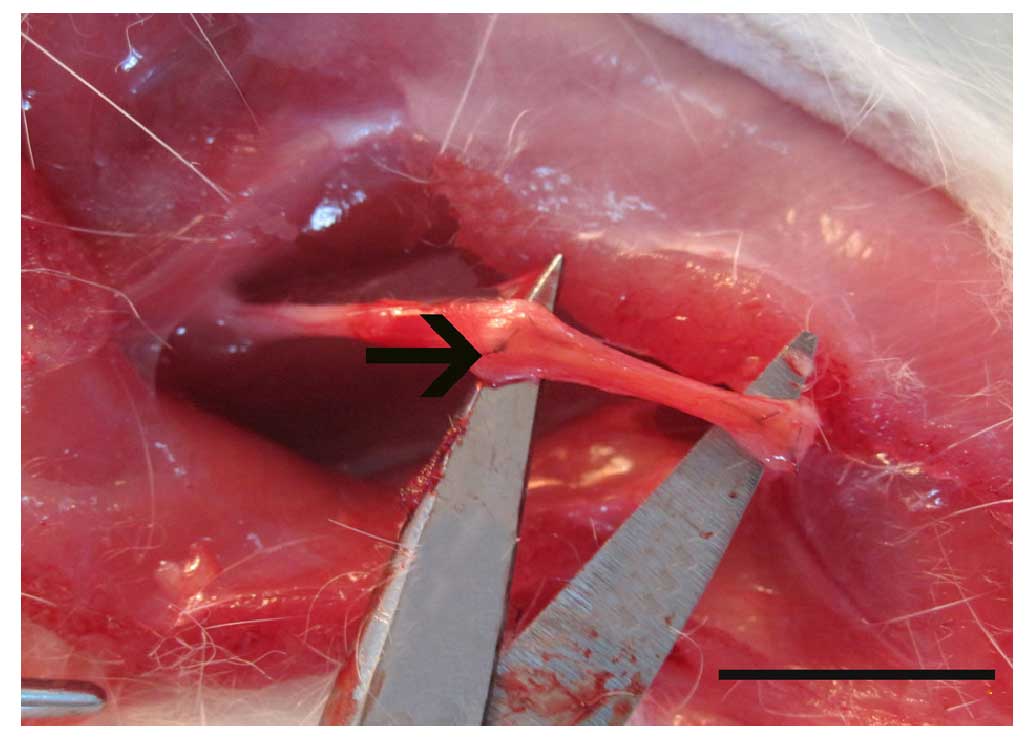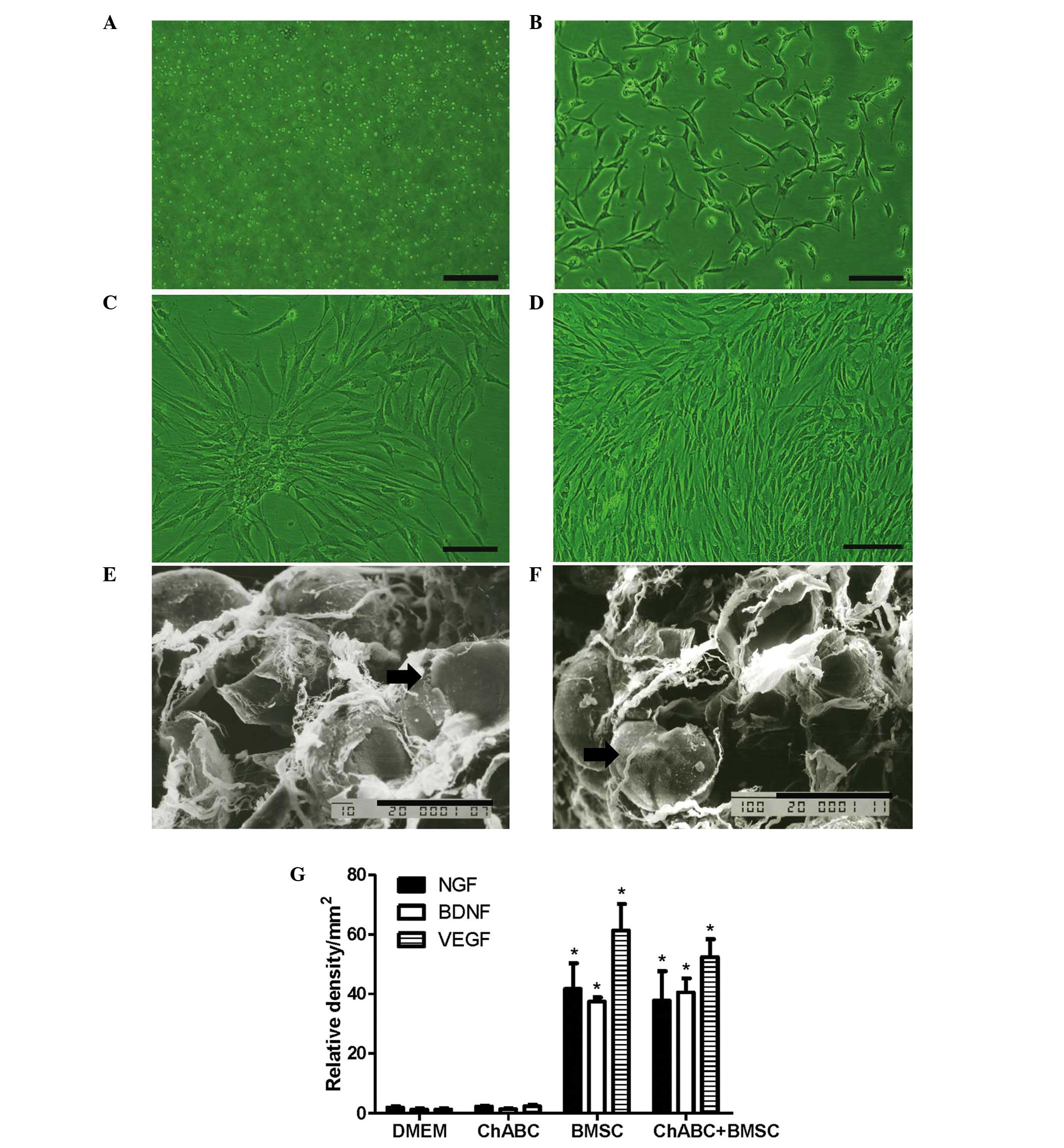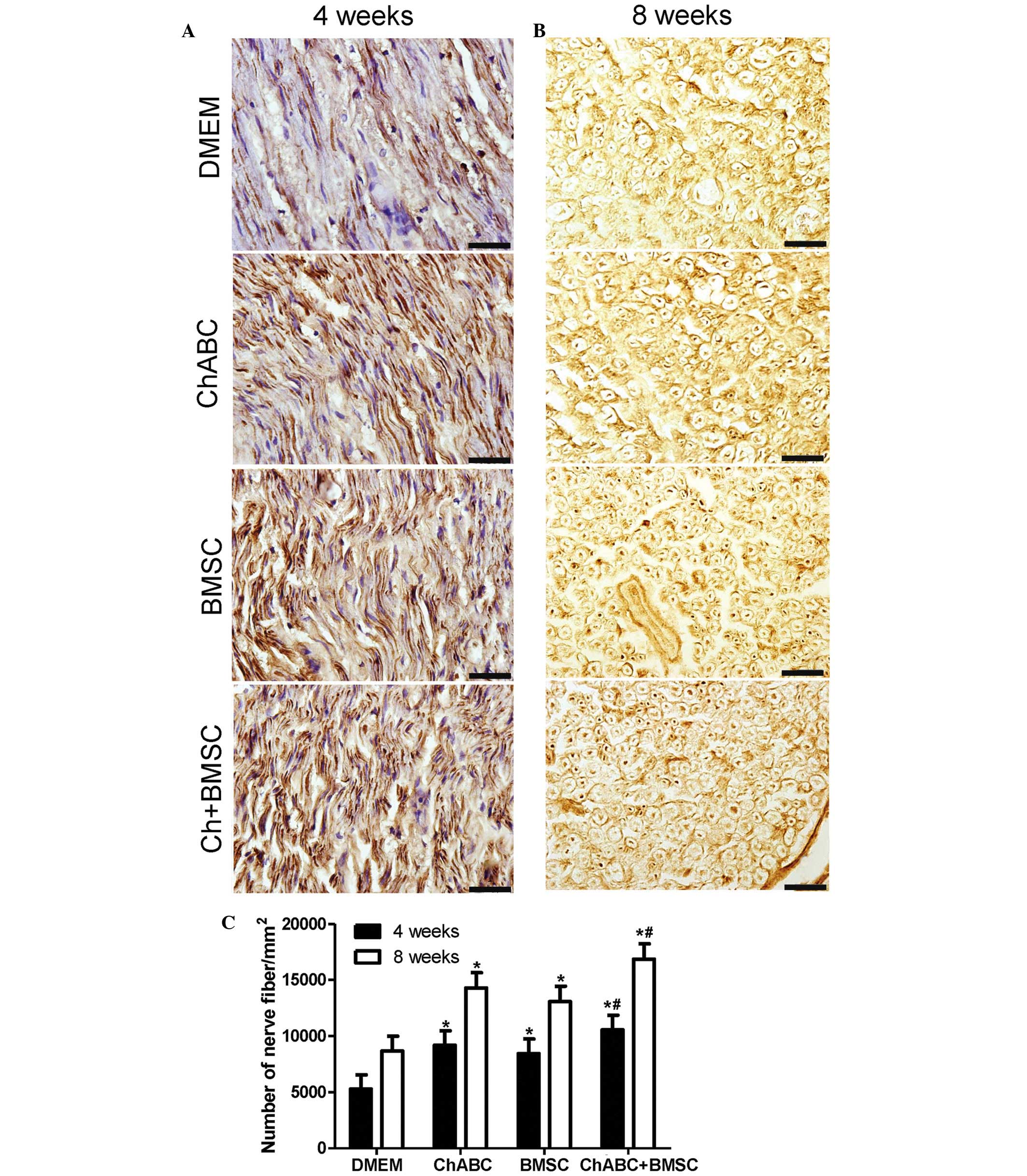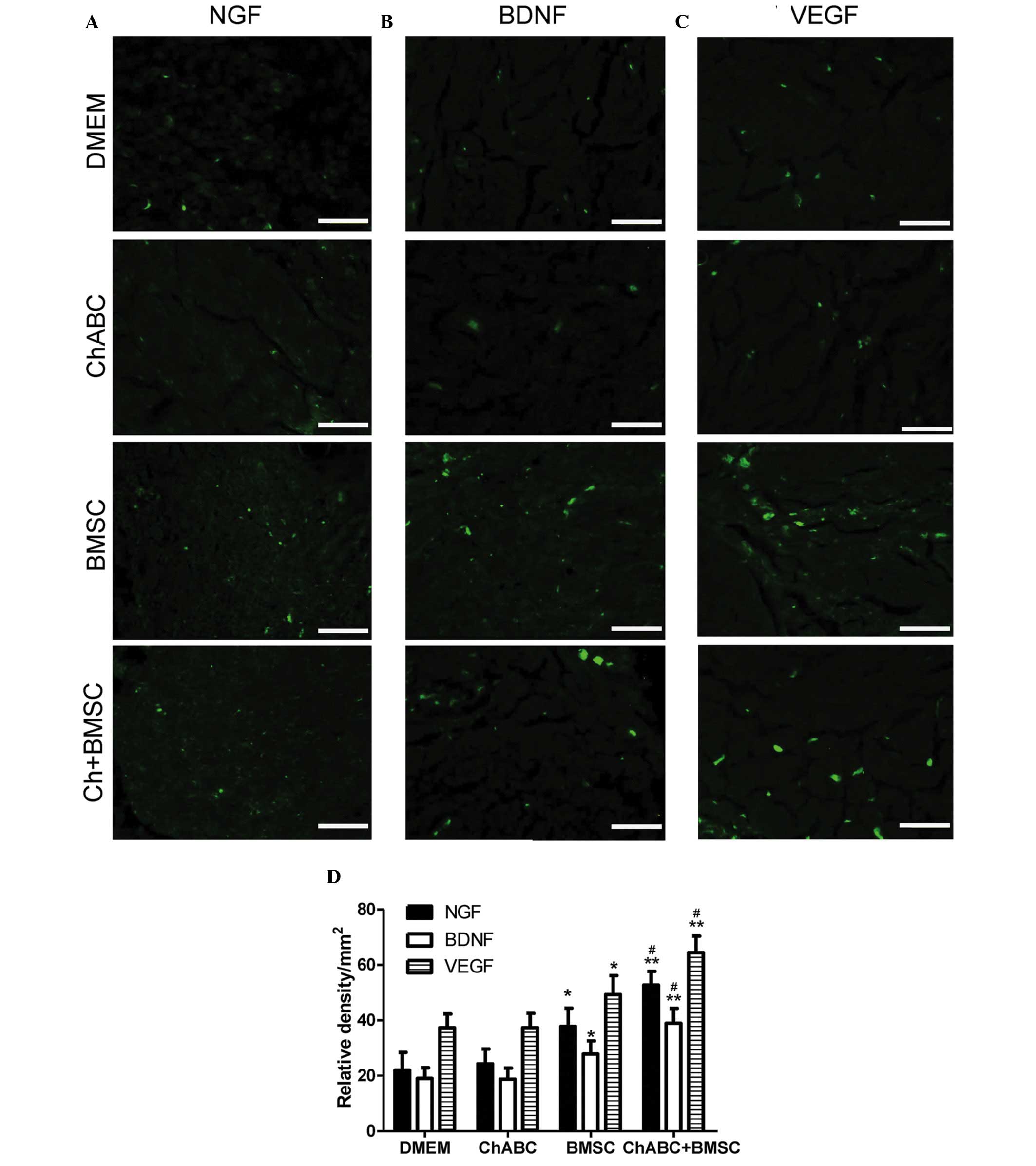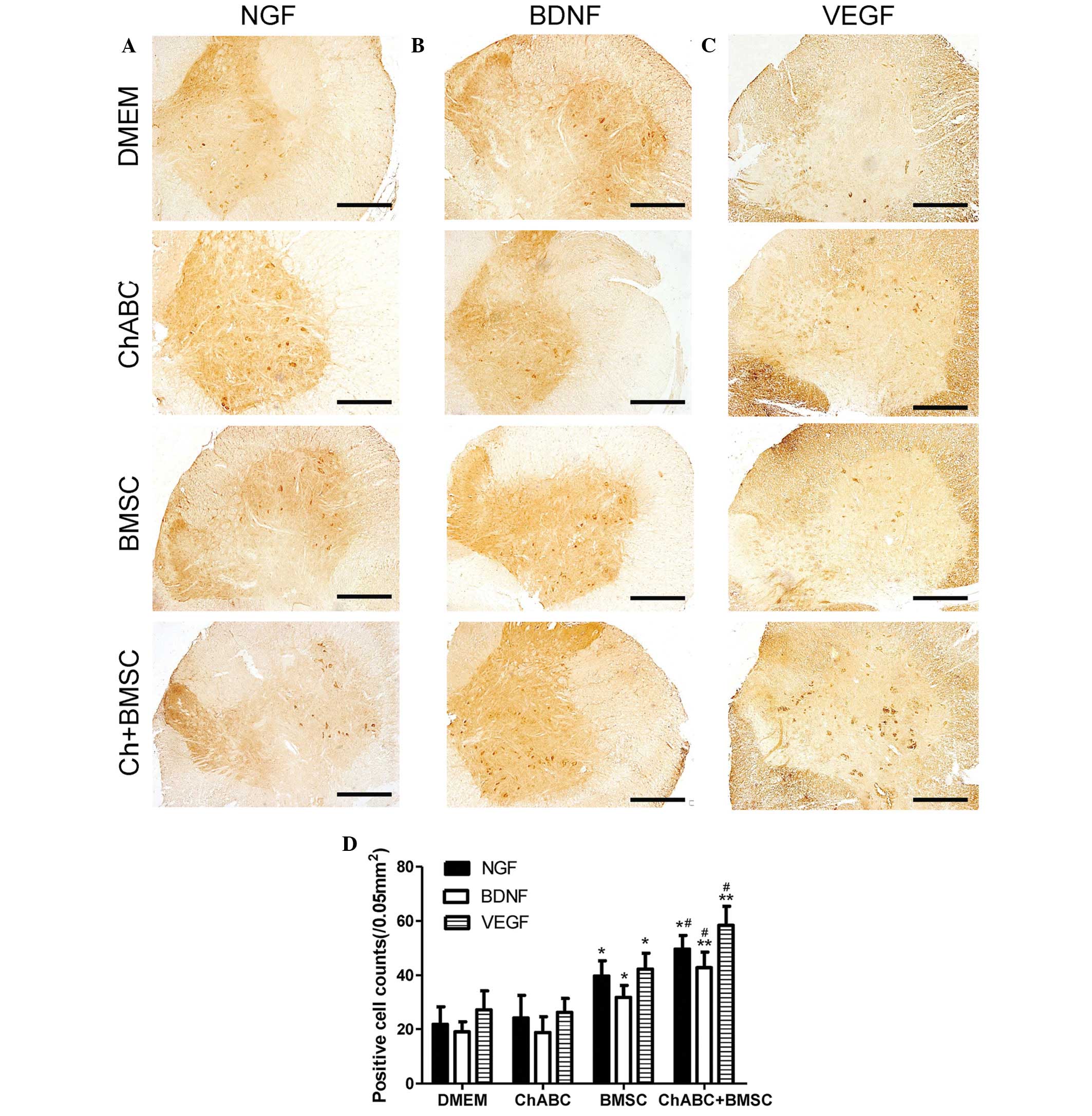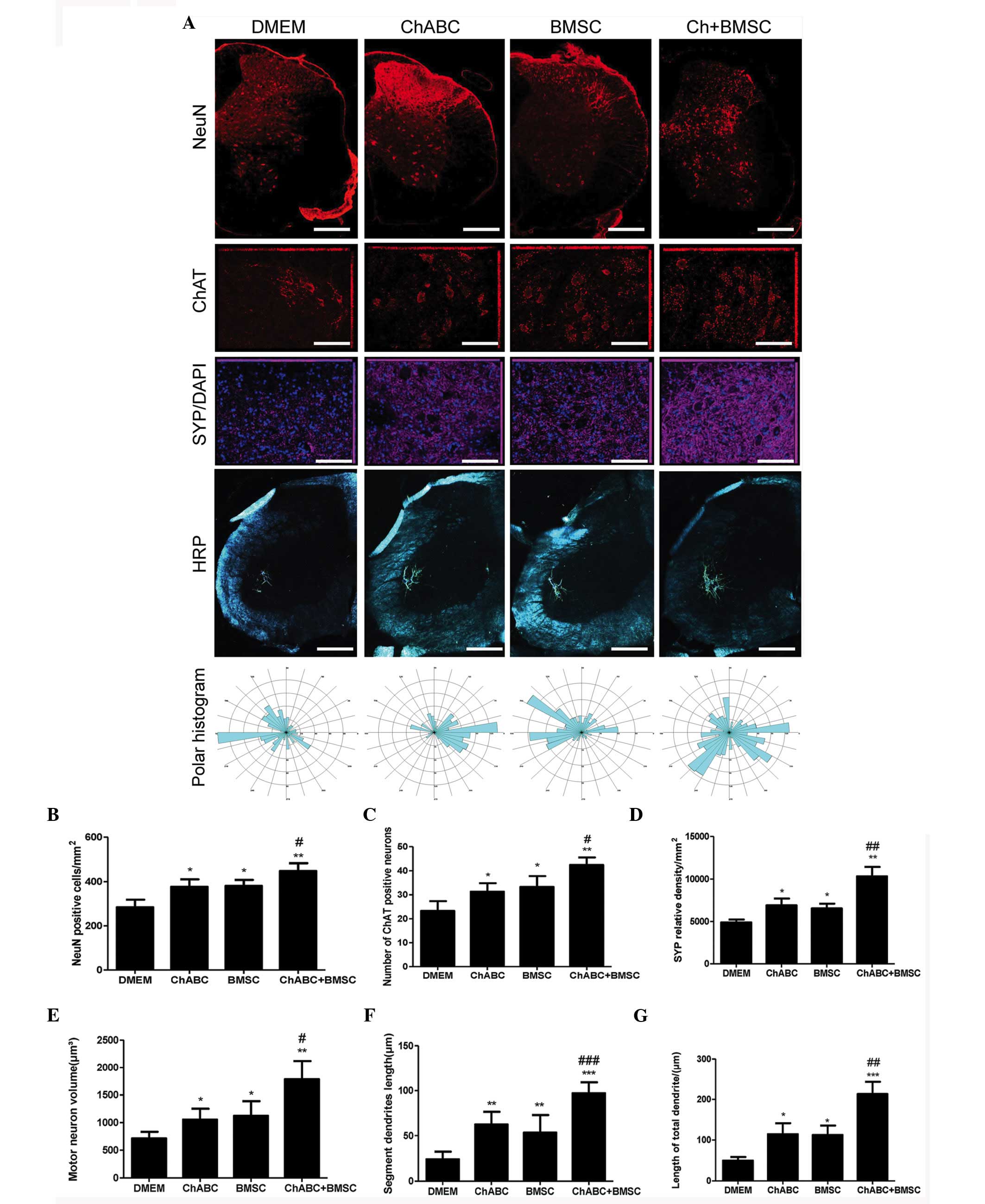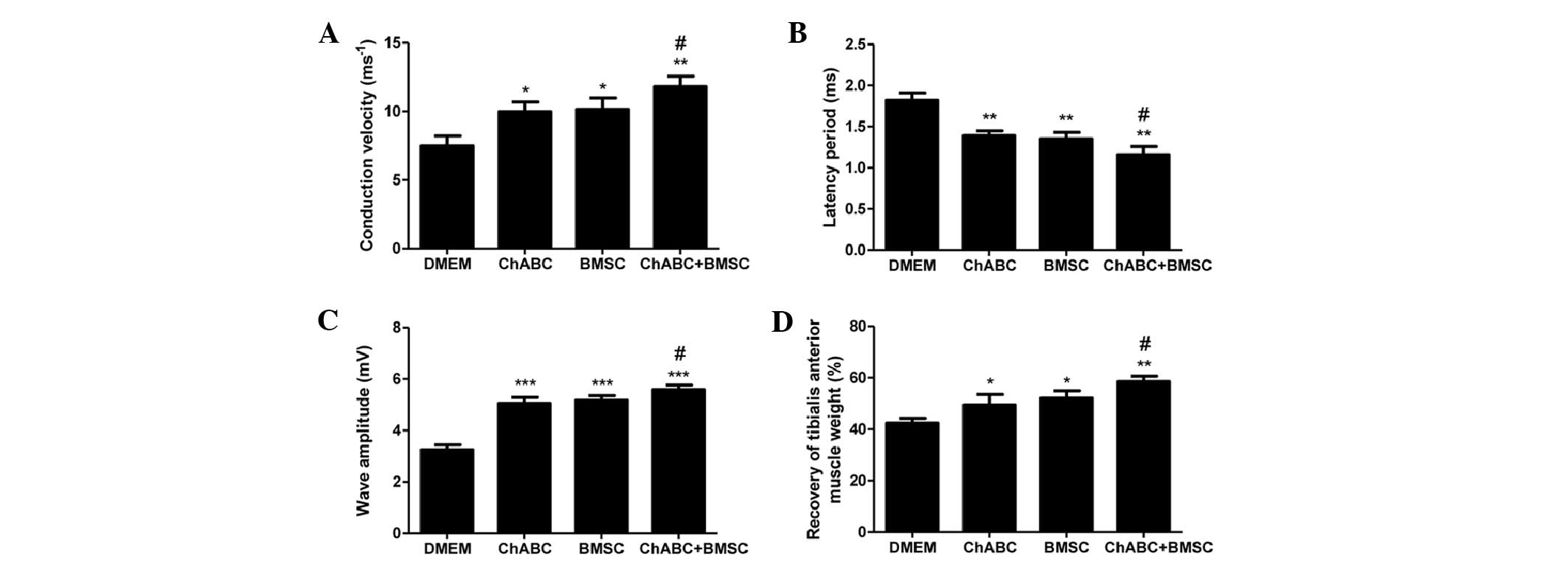|
1
|
Johnson EO, Zoubos AB and Soucacos PN:
Regeneration and repair of peripheral nerves. Injury. 36(Suppl 4):
S24–S29. 2005. View Article : Google Scholar : PubMed/NCBI
|
|
2
|
Millesi H: Bridging defects: Autologous
nerve graftsHow to improve the results of peripheral nerve surgery.
100. Millesi H and Schmidhammer R: Springer; Vienna: pp. 37–38.
2007, View Article : Google Scholar
|
|
3
|
Tang P and Chauhan A: Decellular Nerve
Allografts. J Am Acad Orthop Surg. 23:641–647. 2015. View Article : Google Scholar : PubMed/NCBI
|
|
4
|
Zhang C, Yao C, He XJ and Li HP: Repair of
subacute spinal cord crush injury by bone marrow stromal cell
transplantation and chondroitinase ABC microinjection in adult
rats. Nan Fang Yi Ke Da Xue Xue Bao. 30:2030–2035. 2010.(In
Chinese). PubMed/NCBI
|
|
5
|
Zhang LX, Tong XJ, Sun XH, Tong L, Gao J,
Jia H and Li ZH: Experimental study of low dose ultrashortwave
promoting nerve regeneration after acellular nerve allografts
repairing the sciatic nerve gap of rats. Cell Mol Neurobiol.
28:501–509. 2008. View Article : Google Scholar : PubMed/NCBI
|
|
6
|
Côté MP, Amin AA, Tom VJ and Houle JD:
Peripheral nerve grafts support regeneration after spinal cord
injury. Neurotherapeutics. 8:294–303. 2011. View Article : Google Scholar : PubMed/NCBI
|
|
7
|
Zhang Y, Zhang H, Zhang G, Ka K and Huang
W: Combining acellular nerve allografts with brain-derived
neurotrophic factor transfected bone marrow mesenchymal stem cells
restores sciatic nerve injury better than either intervention
alone. Neural Regen Res. 9:1814–1819. 2014. View Article : Google Scholar : PubMed/NCBI
|
|
8
|
Jia H, Wang Y, Tong XJ, Liu GB, Li Q,
Zhang LX and Sun XH: Sciatic nerve repair by acellular nerve
xenografts implanted with BMSCs in rats xenograft combined with
BMSCs. Synapse. 66:256–269. 2012. View Article : Google Scholar : PubMed/NCBI
|
|
9
|
Li C, Zhang X, Cao R, Yu B, Liang H, Zhou
M, Li D, Wang Y and Liu E: Allografts of the acellular sciatic
nerve and brain-derived neurotrophic factor repair spinal cord
injury in adult rats. PLoS One. 7:e428132012. View Article : Google Scholar : PubMed/NCBI
|
|
10
|
Wang Y, Zhao Z, Ren Z, Zhao B, Zhang L,
Chen J, Xu W, Lu S, Zhao Q and Peng J: Recellularized nerve
allografts with differentiated mesenchymal stem cells promote
peripheral nerve regeneration. Neurosci Lett. 514:96–101. 2012.
View Article : Google Scholar : PubMed/NCBI
|
|
11
|
Chen CJ, Ou YC, Liao SL, Chen WY, Chen SY,
Wu CW, Wang CC, Wang WY, Huang YS and Hsu SH: Transplantation of
bone marrow stromal cells for peripheral nerve repair. Exp Neuro.
204:443–453. 2007. View Article : Google Scholar
|
|
12
|
Wang Y, Jia H, Li WY, Tong XJ, Liu GB and
Kang SW: Synergistic effects of bone mesenchymal stem cells and
chondroitinase ABC on nerve regeneration after acellular nerve
allograft in rats. Cell Mol Neurobiol. 32:361–371. 2012. View Article : Google Scholar : PubMed/NCBI
|
|
13
|
Sanchez-Ramos J, Song S, Cardozo-Pelaez F,
Hazzi C, Stedeford T, Willing A, Freeman TB, Saporta S, Janssen W,
Patel N, et al: Adult bone marrow stromal cells differentiate into
neural cells in vitro. Exp Neurol. 164:247–256. 2000. View Article : Google Scholar : PubMed/NCBI
|
|
14
|
Goldstein LA, Kurz EM and Sengelaub DR:
Androgen regulation of dendritic growth and retraction in the
development of a sexually dimorphic spinal nucleus. J Neurosci.
10:935–946. 1990.PubMed/NCBI
|
|
15
|
Kurz EM, Bowers CA and Sengelaub DR:
Morphology of rat spinal motoneurons with normal and hormonally
altered specificity. J Comp Neurol. 292:638–650. 1990. View Article : Google Scholar : PubMed/NCBI
|
|
16
|
Byers JS, Huguenard AL, Kuruppu D, Liu NK,
Xu XM and Sengelaub DR: Neuroprotective effects of testosterone on
motoneuron and muscle morphology following spinal cord injury. J
Comp Neurol. 520:2683–2696. 2012. View Article : Google Scholar : PubMed/NCBI
|
|
17
|
Zhang YR, Ka K, Zhang GC, Zhang H, Shang
Y, Zhao GQ and Huang WH: Repair of peripheral nerve defects with
chemically extracted acellular nerve allografts loaded with
neurotrophic factors-transfected bone marrow mesenchymal stem
cells. Neural Regen Res. 10:1498–1506. 2015. View Article : Google Scholar : PubMed/NCBI
|
|
18
|
DiStefano PS, Friedman B, Radziejewski C,
Alexander C, Boland P, Schick CM, Lindsay RM and Wiegand SJ: The
neurotrophins BDNF, NT-3, and NGF display distinct patterns of
retrograde axonal transport in peripheral and central neurons.
Neuron. 8:983–993. 1992. View Article : Google Scholar : PubMed/NCBI
|
|
19
|
Bennett TM, Dowsing BJ, Austin L, Messina
A, Nicola NA and Morrison WA: Anterograde transport of leukemia
inhibitory factor within transected sciatic nerves. Muscle Nerve.
22:78–87. 1999. View Article : Google Scholar : PubMed/NCBI
|
|
20
|
vonBartheld CS, Wang X and Butowt R:
Anterograde axonal transport, transcytosis, and recycling of
neurotrophic factors: The concept of trophic currencies in neural
networks. Mol Neurobiol. 24:1–28. 2001. View Article : Google Scholar : PubMed/NCBI
|
|
21
|
Spejo AB, Carvalho JL, Goes AM and
Oliveira AL: Neuroprotective effects of mesenchymal stem cells on
spinal motoneurons following ventral root axotomy: Synapse
stability and axonal regeneration. Neuroscience. 250:715–732. 2013.
View Article : Google Scholar : PubMed/NCBI
|
|
22
|
Suzuki M, McHugh J, Tork C, Shelley B,
Hayes A, Bellantuono I, Aebischer P and Svendsen CN: Direct muscle
delivery of GDNF with human mesenchymal stem cells improves motor
neuron survival and function in a rat model of familial ALS. Mol
Ther. 16:2002–2010. 2008. View Article : Google Scholar : PubMed/NCBI
|
|
23
|
Rind HB, Butowt R and von Bartheld CS:
Synaptic targeting of retrogradely transported trophic factors in
motoneurons: Comparison of glial cell line-derived neurotrophic
factor, brain-derived neurotrophic factor, and cardiotrophin-1 with
tetanus toxin. J Neurosci. 25:539–549. 2005. View Article : Google Scholar : PubMed/NCBI
|
|
24
|
Hell RC Rodrigues, Costa MM Silva, Goes AM
and Oliveira AL: Local injection of BDNF producing mesenchymal stem
cells increases neuronal survival and synaptic stability following
ventral root avulsion. Neurobiol Dis. 33:290–300. 2009. View Article : Google Scholar : PubMed/NCBI
|
|
25
|
Wong WK, Cheung AW, Yu SW, Sha O and Cho
EY: Hepatocyte growth factor promotes long-term survival and axonal
regeneration of retinal ganglion cells after optic nerve injury:
Comparison with CNTF and BDNF. CNS Neurosci Ther. 20:916–929. 2014.
View Article : Google Scholar : PubMed/NCBI
|
|
26
|
Difato F, Tsushima H, Pesce M, Benfenati
F, Blau A and Chieregatti E: The formation of actin waves during
regeneration after axonal lesion is enhanced by BDNF. Sci Rep.
1:1832011. View Article : Google Scholar : PubMed/NCBI
|
|
27
|
Haninec P, Kaiser R, Bobek V and Dubový P:
Enhancement of musculocutaneous nerve reinnervation after vascular
endothelial growth factor (VEGF) gene therapy. BMC Neurosci.
13:572012. View Article : Google Scholar : PubMed/NCBI
|
|
28
|
Moimas S, Novati F, Ronchi G, Zacchigna S,
Fregnan F, Zentilin L, Papa G, Giacca M, Geuna S, Perroteau I, et
al: Effect of vascular endothelial growth factor gene therapy on
post-traumatic peripheral nerve regeneration and
denervation-related muscle atrophy. Gene Ther. 20:1014–1021. 2013.
View Article : Google Scholar : PubMed/NCBI
|















